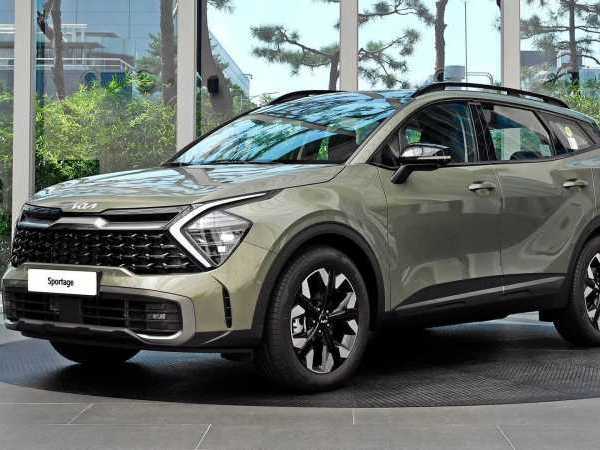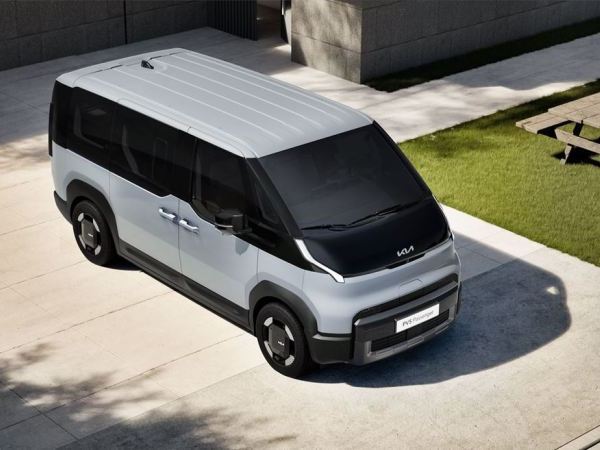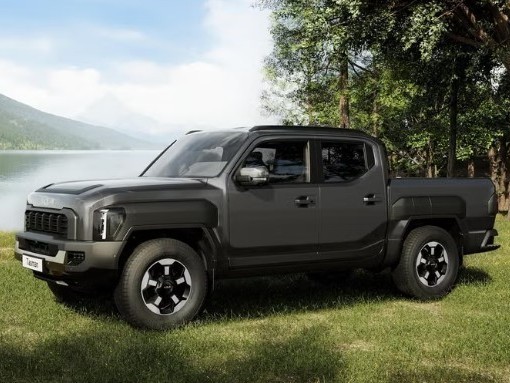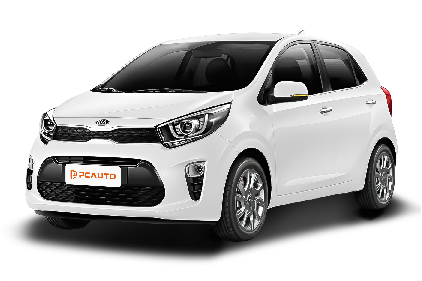Q
Is the 2019 Kia reliable?
The 2019 Kia models perform slightly above average in terms of reliability. Mainstay models like the Kia Picanto and Kia Sorento have garnered positive user feedback for the stability of their powertrains and electronic systems, especially the combination of 1.6L and 2.0L naturally aspirated engines with 6-speed automatic transmissions, which feature mature technology and relatively low maintenance costs. However, some owners have reported that interior materials are prone to wear and tear, and the sound insulation is just so-so. These issues are common among vehicles in the same class and do not affect core functionality. If considering a used car, it is advisable to focus on checking maintenance records, particularly the regular upkeep of turbocharged models. Kia's 5-year/unlimited mileage warranty policy is quite beneficial for the first owner, but the warranty period shortens after transfer, so it's necessary to confirm the remaining warranty coverage before purchasing. Among same-class models, Japanese brands typically excel with lower failure rates, but Kia has an edge in terms of rich components and cost-effectiveness, such as most models coming standard with electronic stability control and rearview cameras. The local climate has a significant impact on vehicle reliability. It is recommended to regularly inspect the air conditioning system and rubber components, and pay attention to chassis rust prevention in rainy environments.
Special Disclaimer: This content is published by users and does not represent the views or position of PCauto.
Related Q&A
Q
How long do 2019 Kias last?
A 2019 Kia should easily hit 200,000 kilometers or more with regular maintenance and normal driving. Of course, actual lifespan depends on things like driving habits, how often you service it, and the roads you drive on. Hyundai-Kia's powertrain tech has come a long way lately – their Theta II and Nu engines paired with 6AT or dual-clutch transmissions are pretty solid for durability. I'd recommend changing the full synthetic oil every 10,000 kilometers and keeping an eye on the transmission fluid levels regularly.
For rust protection, if you're in a tropical climate, pay extra attention to the undercarriage. A professional rust treatment every two years is a good idea. Also, most 2019 Kias came with smart driver-assist systems – those electronics' long-term reliability is something to watch. Regular system diagnostics can help keep them running longer.
On the used car market, well-maintained 2019 Kias still hold decent resale value, especially popular models like the Sportage and Cerato. That tells you the market trusts their durability. If you're looking at a used one, focus on checking the engine condition, how smoothly the transmission shifts, and whether all the electronic gadgets work – those are usually the key factors that affect how long the car will last.
Q
What is the resale value of a 2019 Kia?
The residual value of a used 2019 Kia depends on factors like model, mileage, maintenance history, and market supply and demand. Generally, popular models like the 2019 Kia Cerato or Sportage in good condition retain around 50% to 60% of their original purchase price, with specifics varying by trim level and mileage—low-mileage examples with complete service records tend to hold more value. Plus, Kia's improved reliability in recent years has helped support their used car market values. If you're considering selling or trading in, it's a good idea to check local used car platforms for similar model prices or get a more accurate valuation from a professional appraisal service. Regular maintenance and keeping full repair records can also significantly boost a used car's appeal. It's worth noting that used car prices are also affected by new car market competition and promotional activities—for example, the launch of new models or increased discounts can cause short-term fluctuations in older model residual values, so keeping an eye on market trends is advisable to seize the best trading opportunity.
Q
What size engine is in the 2019 Kia Picanto?
The 2019 Kia Picanto is powered by a 1.25-liter four-cylinder naturally aspirated gasoline engine, churning out 84 horsepower and 122 Nm of peak torque. This engine is known for its smooth performance and fuel efficiency, making it perfect for city commuting. It pairs with either a 5-speed manual or 4-speed automatic transmission. As a small car, the Picanto's engine is designed to deliver strong low-end torque, which is ideal for stop-and-go traffic. Plus, maintenance costs are relatively low. For budget-conscious buyers who still want reliable power, this engine is a solid pick. It's worth noting that while small-displacement naturally aspirated engines don't have the same power punch as turbocharged ones, their simple structure and high durability mean better long-term economy. That's one reason many small cars still stick with naturally aspirated engines.
Q
What is the fuel consumption of the Kia Picanto 2019?
The fuel economy of the 2019 Kia Picanto varies by transmission type. Manual models deliver around 5.1 liters per 100 kilometers combined, while automatics are slightly higher at approximately 5.8 liters per 100 kilometers—pretty economical for a small city commuter. Under the hood, the 1.25L four-cylinder naturally aspirated engine isn’t the most powerful, but its strong fuel efficiency makes it perfect for daily driving. It’s worth noting that real-world fuel consumption depends on driving habits, road conditions, and vehicle maintenance. Things like frequent hard acceleration or long idling periods can bump up fuel use. We recommend regular maintenance and keeping tires properly inflated to maintain optimal efficiency. Also, small cars like the Picanto typically feature lightweight construction, another factor in their fuel-sipping nature—making them a solid pick for cost-conscious buyers.
Q
How much does a 2019 Kia cost?
The prices of 2019 Kia models vary significantly depending on the specific model and configuration. Taking the local used car market as an example, entry-level models like the Picanto have a used price of approximately RM40,000 to RM60,000, mid-size sedans such as the Cerato K3 are around RM70,000 to RM100,000, and SUV models like the Sportage range from RM90,000 to RM130,000. The actual price needs to be evaluated based on the vehicle's condition, mileage, and warranty period. For new cars, some 2019 models have been discontinued, but current models of the same class, such as the Seltos or Sorento, have a starting price of about RM90,000 to RM150,000. It is recommended to check the latest quotes through the official website or authorized dealers. It is worth noting that Kia models are usually equipped with intelligent safety systems such as forward collision avoidance assist and lane keeping assist, and their warranty policies are quite competitive. Before purchasing a car, you can compare the space performance and fuel consumption data with Japanese or European brands of the same class. At the same time, it is recommended to test drive to experience the handling. If considering a used car, be sure to check the maintenance records to avoid accident vehicles or flood-damaged vehicles.
Q
How much is the 2019 Picanto?
The 2019 Picanto, as an economical and practical small car, has a used price that varies depending on condition, mileage, and specifications. Currently, the market price ranges roughly from RM30,000 to RM45,000, with the exact figure needing to be assessed based on the actual vehicle condition. This car is favored by urban users for its fuel efficiency, nimble handling, and compact design, making it especially suitable for daily commuting and navigating narrow roads. The Picanto is powered by a 1.2-liter naturally aspirated engine, offering a good balance of power and fuel economy. It also comes with basic safety features like dual airbags and ABS, while higher trim levels may include a touchscreen infotainment system and reverse camera. For buyers on a tight budget, a used Picanto represents a solid value-for-money choice. It's advisable to have a professional inspection to verify the car's condition before purchasing and to compare quotes from different sellers to ensure a fair deal. Additionally, same level cars like Perodua Axia or Proton Iriz are also worth considering, and you can make a comparison based on personal needs and preferences.
Latest Q&A
Q
Does the BMW X3 2020 have CarPlay?
The 2020 BMW X3 does come with Apple CarPlay functionality. Back then, this feature was either a standard offering or an optional extra, depending on the specific trim level and equipment package of the vehicle. Drivers can seamlessly connect their iPhones through the iDrive system on the central display, accessing common apps like navigation, music, and calls. The interface is intuitive and supports Siri voice control, which really boosts convenience and safety behind the wheel. It's worth noting that CarPlay initially required a wired connection via the USB port, though some later software updates might have enabled wireless connectivity. To be sure, it's best to check your specific vehicle's configuration using the VIN or consulting local dealers. As for the infotainment system, both BMW's iDrive 6.0 and 7.0 versions offer solid compatibility. If you run into connection issues, try updating your phone's OS or the car's software. Android users can also connect their devices using Android Auto, which offers similar functionality, though there are some differences in app ecosystem support to keep in mind. For those looking to enhance their experience even further, exploring BMW's optional extras like enhanced Bluetooth and wireless charging is a good idea. These features complement CarPlay nicely – wireless charging, for example, eliminates the battery anxiety that can come with prolonged wired connections.
Q
Does the BMW X3 2020 have remote start?
The 2020 BMW X3 offers remote start functionality on select trims, though it requires the vehicle to be equipped with ConnectedDrive services along with the appropriate key or mobile app, like the BMW Connected App. This feature lets owners fire up the engine and adjust the cabin temperature via their smartphone beforehand—super handy for pre-warming or cooling the interior during extreme hot or cold weather. If your X3 didn’t come with it factory-installed, you can usually have the relevant module added later through an authorized BMW dealer, but make sure to check compatibility and warranty terms first. Remote start tech has become pretty common these days; beyond BMW, plenty of other brands offer similar features, though the specifics can vary—some might require a subscription or depend on certain network coverage. It’s a good idea to check your owner’s manual or hit up your dealer to confirm your exact setup, and also be aware of local laws regarding engine idling time to stay compliant. These kinds of tech features definitely boost convenience, but it’s still important to get familiar with how they work and any important dos and don’ts.
Q
Is there a recall on the BMW 3 Series 2020?
Regarding whether there's a recall for the 2020 BMW 3 Series, according to official records, this model has been subject to recalls worldwide due to potential issues with certain components, such as the fuel pump module or software system updates. However, the specific recall scope needs to be confirmed by checking the Vehicle Identification Number (VIN) on BMW's official website or at an authorized service center. It's advisable for owners to regularly pay attention to official notifications or directly contact local dealerships for the latest information to ensure the vehicle's safety performance meets standards. Additionally, regardless of whether a recall is involved, regular maintenance and inspections are crucial for maintaining the vehicle's condition, especially for electronic systems and key components. BMW's intelligent diagnostic tools can detect potential issues in advance. If any abnormalities are noticed, such as warning lights on the dashboard or unusual noises while driving, they should be addressed promptly to prevent minor problems from developing into safety hazards. For used car buyers, it's recommended to verify maintenance and recall records through official channels before purchasing to ensure transparency in the vehicle's history.
Q
Does the 2020 BMW X3 have a touch screen?
The 2020 BMW X3 does come with a touchscreen. It's equipped with BMW's latest iDrive 7.0 system, featuring a 10.25-inch center display that supports touch operation while still retaining the traditional rotary knob control, making it easy for drivers to operate quickly on the move. Beyond touch functionality, this screen also supports voice control and gesture commands, offering a more intelligent interactive experience. In the local market, the car's configuration is largely consistent with global versions. Owners can directly access navigation, entertainment, vehicle settings, and other functions through the screen, and the system also supports wireless Apple CarPlay, further enhancing convenience. It's worth noting that the iDrive 7.0 system has an intuitive interface design and fast response times, so even users new to BMW models can get the hang of it quickly. If you have high demands for in-car technology, the 2020 X3's system should meet your daily needs, and its hardware and software performance are also among the leading in its class.
Q
What generation is the 2020 BMW X3?
The 2020 BMW X3 belongs to the third generation (chassis code G01), which first launched in 2017 and got a mid-cycle refresh in 2020, mainly updating the exterior design and tech features. The third-gen X3 rides on BMW's CLAR modular platform, which not only cuts down on weight but also improves handling and fuel efficiency, while offering more spacious interior room. Under the hood, the 2020 X3 offers multiple options, including a 2.0L four-cylinder turbo engine and a 3.0L inline-six turbo, with some models getting the xDrive all-wheel-drive system to suit different driving needs. This generation also brings more smart driver assistance features, like adaptive cruise control and lane-keeping assist, further boosting driving safety. For consumers who love luxury SUVs, the 2020 X3 is a solid pick—it combines BMW's traditional driving fun with practicality, and its tech features keep up with the times. If you're interested in this car, head to a nearby dealership for a test drive and experience its performance firsthand.
View MoreRelated News

In Malaysia, which sliding door MPVs are available?
MichaelOct 30, 2025

Kia Sportage: Superior Suspension for Smooth Ride
Kevin WongMay 19, 2025

Kia Carnival: Spacious & Versatile for Every Journey
Kevin WongMay 19, 2025

Kia reveals all details of PV5, with a maximum range of up to 400 kilometers
LienMar 11, 2025

173L cargo box, 3500kg towing capacity, KIA Tasman meets all your needs!
MichaelOct 31, 2024
View More









 Cars
Cars




Pros
Cons